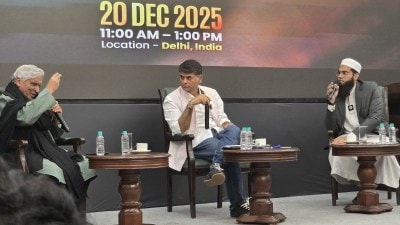Multidimensional Poverty Index: How the capital fared in the last five years
According to the 2023 Multidimensional Poverty Index prepared by the NITI Aayog, North Delhi, West Delhi and South West Delhi have seen an increase in the headcount ratio of the multi-dimensionally poor.
 Two more districts — New Delhi and Central Delhi — have seen a marginal increase. (Express File Photo)
Two more districts — New Delhi and Central Delhi — have seen a marginal increase. (Express File Photo) Three out of 11 districts in the city have seen the headcount ratio — proportion of population that lives below the poverty threshold — of the multi-dimensionally poor increase even as the Capital has witnessed an improvement in multidimensional poverty between 2015-16 and 2019-2021.
According to the 2023 Multidimensional Poverty Index prepared by the NITI Aayog, North Delhi, West Delhi and South West Delhi have seen an increase in the headcount ratio of the multi-dimensionally poor.
Two more districts — New Delhi and Central Delhi — have seen a marginal increase.
North East Delhi, which previously saw the multidimensional poverty rate of 7.35%, has seen a marked improvement as has North West Delhi. The city, overall, had one of the lowest headcount ratios in the country and witnessed an improvement of one percentage point — from 4.44% to 3.43% in five years.
The index is calculated using 12 indicators, gathered from the NFHS reports from 2015-16 and 2019-21 (one-year gap due to Covid). These indicators include nutrition, child and adolescent mortality, years of schooling, school attendance, cooking fuel, sanitation, drinking water, electricity, housing, assets and bank account, and are grouped under three heads — health, education and standard of living.
Former Chief Statistician Pronab Sen said one of the probable reasons for an increase in poverty in a few districts could be migration. “When migrants first enter a state, they usually have nowhere to go… they settle in slums, which ends up increasing the multi-dimensional poverty. This could be one of the reasons.”







